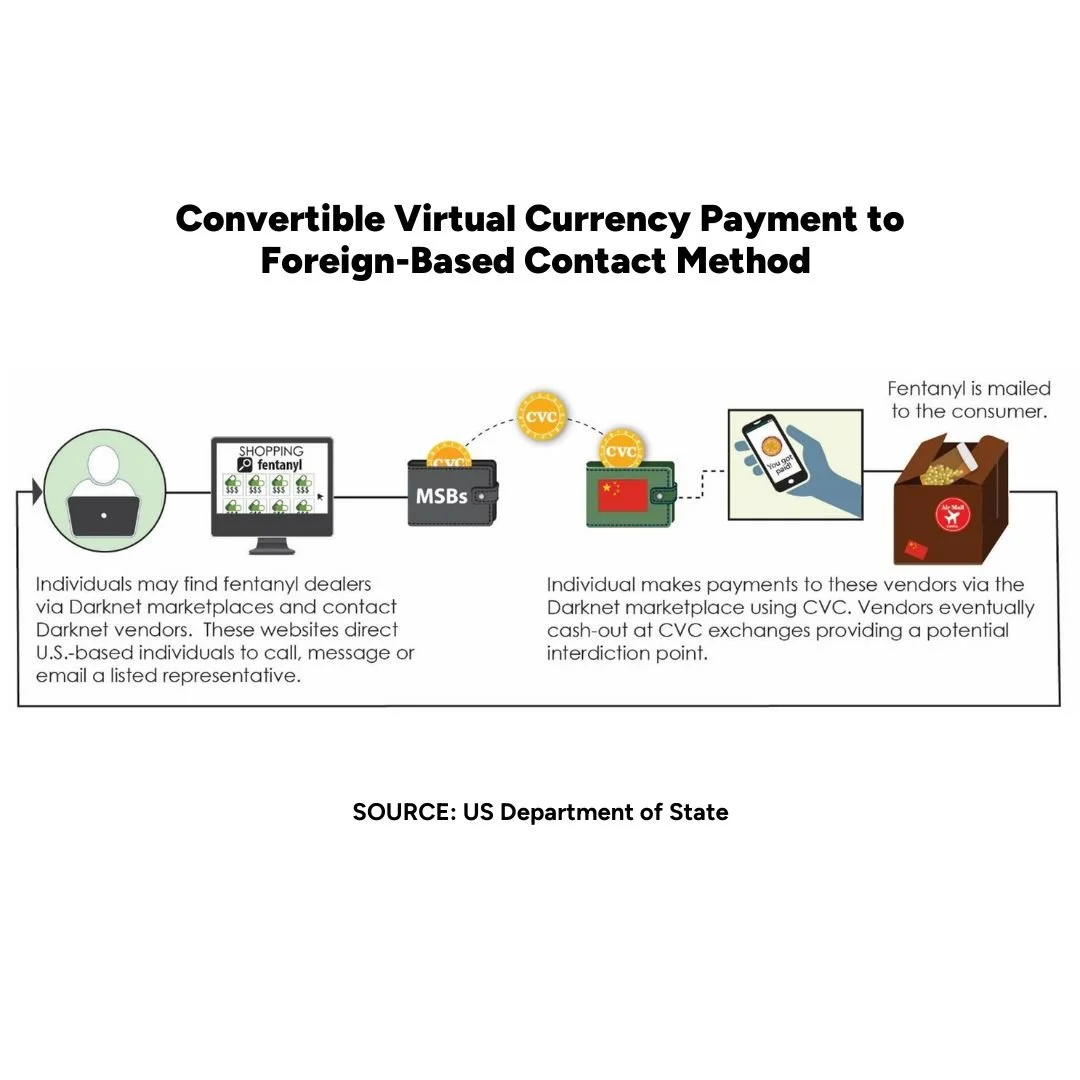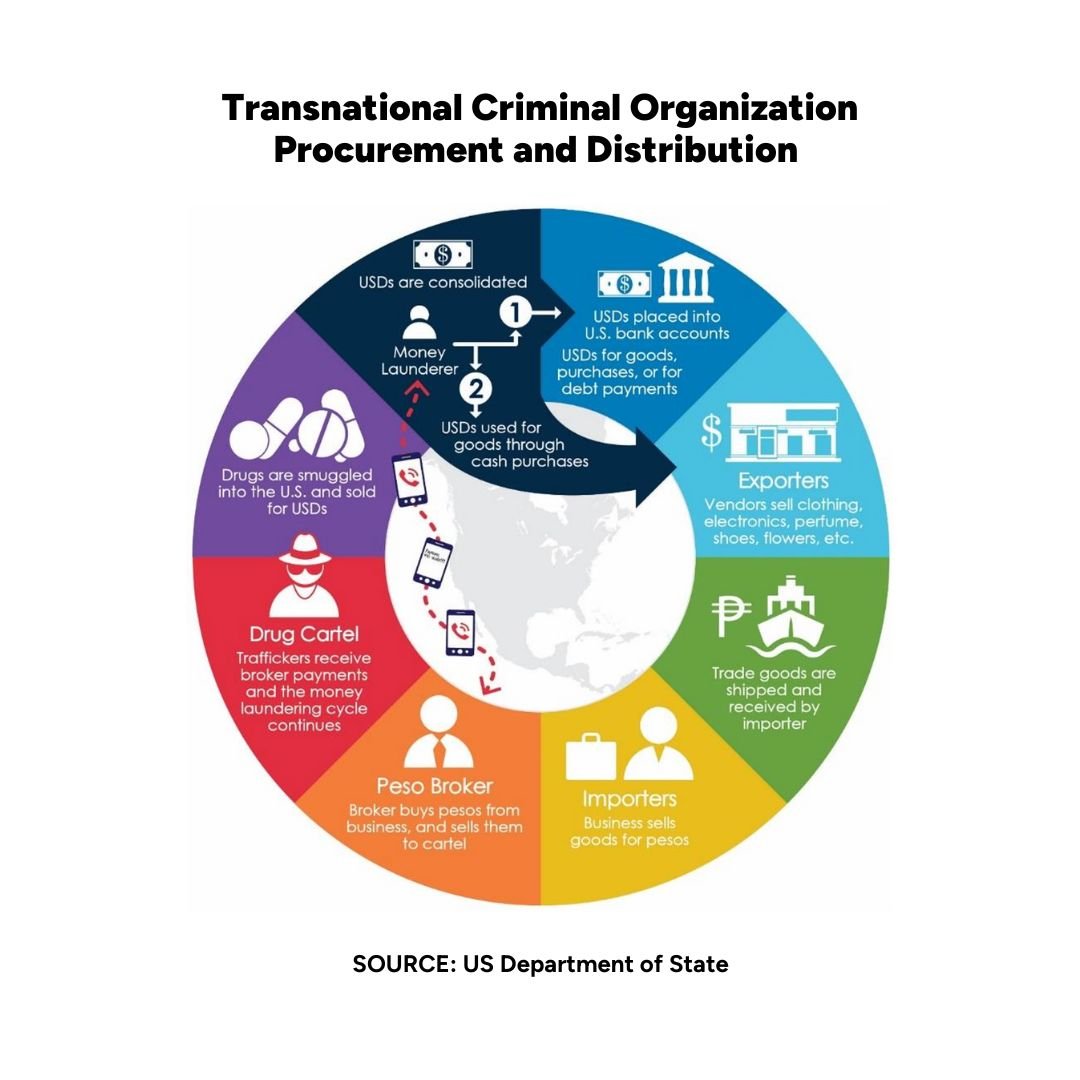The Ripple Effect, Part One: Illicit Fentanyl’s Origin Story
Fentanyl has become inescapable: Daily news headlines recount the alarming uptick in overdose deaths related to fentanyl poisoning while federal, state, and local government agencies issue warnings about its dangers. Schools, along with community and county organizations, scramble to create educational materials and awareness campaigns, while healthcare facilities steel themselves for the crippling strain on resources. The United States continues to grapple with the devastating opioid crisis, and illicit fentanyl has emerged as an insidious player in the epidemic. This potent synthetic opioid is up to 50 times stronger than heroin and 100 times stronger than morphine. Doctors prescribe pharmaceutical fentanyl to treat severe pain, but illicit fentanyl is sold on the black market and is responsible for a significant portion of overdose deaths, raising serious concerns about the production and distribution of fentanyl and the routes it takes to infiltrate the country.
Source of Production
To understand the origins of synthetic fentanyl and trace its path of destruction, we must primarily look to China as the key player, though there is evidence that India is beginning to enter the arena. Starting in the mid-2010s, U.S. authorities identified China as the main source of illicit fentanyl and fentanyl analogs that were smuggled into the United States. Fentanyl analogs are alterations of the medically prescribed drug fentanyl that have similar – though not exact – chemical structures and effects. But because of their altered chemical makeup, they are more difficult to detect and, therefore, easier to illegally traffic. In an in-depth investigative report published by the Wilson Center Mexico Institute and InSight Crime, published in 2019, researchers noted that legitimate pharmaceutical or chemical companies in China, where the illegal substances were made in a “third-shift” operation, and small rural labs remained the primary producers of the illicit fentanyl and fentanyl analogs found in the U.S. Additionally, China has been identified as a major source of precursor chemicals used in the production of synthetic opioids, including fentanyl. Precursors are the ingredients – chemicals or solvents – used to manufacture illicit drugs. Unlike naturally occurring opioids such as morphine or heroin, which are derived from the opium poppy plant, synthetic fentanyl is entirely man-made and requires precursors.
Fentanyl’s International Journey
A DEA intelligence report details the routes pure fentanyl, fentanyl analogs, and fentanyl precursors take after initial production in Chinese labs. The substances are sent in parcel packages directly to the U.S., to the U.S. via Canada, or to Mexico. The DEA believes that Chinese chemical companies sell fentanyl precursors online – some of which are legal to export because they are not internationally controlled chemicals – using standard shipping methods via air and sea. The companies avoid detection by Customs and Border Patrol (CDP) by deliberately mislabeling products and hiding them with other legitimate goods such as flour, ground coffee, and powdered milk.
Payments are made using cryptocurrency, payment services like Venmo and Zelle, or bank transfers, making tracing the transactions very difficult. A Fentanyl Advisory, published in 2022 by the Bureau of International Narcotics and Law Enforcement Affairs, notes that most of the fentanyl trafficking in the United States takes place through the direct purchase of fentanyl from China by U.S. individuals for personal consumption or domestic distribution or cross-border trafficking of fentanyl from Mexico by TCOs (transnational criminal organizations) and smaller criminal networks. While larger volumes of fentanyl are seized at the southwest border, the fentanyl is low in purity. By contrast, the smaller volumes seized after arriving in the mail from China are much purer and potent.
Production and Distribution: Mexico’s Role
Mexico is the primary hub for both the production and export of fentanyl that ends up in the United States. Pacific coast ports in Mexico are the most widely used, as they handle a significant volume of international trade, making hiding illicit practices and products easier. Additionally, rampant corruption and intimidation of port employees further enable ease of trafficking. Once the fentanyl products and precursor chemicals arrive in Mexico, they are then synthesized in covert labs and repackaged for distribution to the United States and Canada. Typically, fentanyl is packed with other drugs – heroin, cocaine, meth – or pressed into counterfeit prescription pills and shipped across the U.S. border. In recent years, Customs and Border Patrols along the southern border, especially in San Diego and surrounding counties, have seen a sharp uptick in fentanyl seizures. The United States Attorney’s Office, Southern District of California District notes a more than 700% increase between 2017 and 2022 in fentanyl seizures.
Fentanyl trafficking is a lucrative opportunity for Mexican TCOs and cartels to increase overall profits. Production of fentanyl is relatively cheap, and because of its potency, smaller amounts can be transported at any given time, making eluding detection even easier. A DEA report estimates that one kilogram of heroin nets approximately $80,000, while a comparable amount of pure fentanyl can net between 1 and nearly 3 million dollars. Mexico’s two largest cartels, the Sinaloa and Jalisco, are the key players in the fentanyl trafficking networks, along with Dominican traffickers.
Confronting the Challenge
The production and trafficking of synthetic fentanyl create a complex challenge for law enforcement agencies and policymakers worldwide. Efforts to strengthen the regulation of precursor chemicals, enhance border security measures, and disrupt illicit supply chains are essential components of a multifaceted strategy to combat the opioid epidemic. Synthetic fentanyl continues to proliferate, fueling an opioid crisis that is devastating individuals, families, and communities. We must move from understating to understanding fentanyl’s critical danger.
Stay tuned for Part 2 of The Ripple Effect, where we’ll explore the dangerous effects of fentanyl on the body, fentanyl overdose versus poisoning, polysubstance use, and more. Follow us on Instagram for updates.
References
2018 National Drug Threat Assessment. U.S. Department of Justice, DEA, Oct. 2018, https://www.dea.gov/sites/default/files/2018-11/DIR-032-18%202018%20NDTA%20final%20low%20resolution.pdf. Accessed Apr. 2024.
Advisory to Financial Institutions on Illicit Financial Schemes and Methods Related to the Trafficking of Fentanyl and Other Synthetic Opioids. FinCEN Resource Center, 2019. https://www.state.gov/wp-content/uploads/2020/02/Fentanyl-Advisory-Money-Tab-D-508.pdf. Accessed Apr. 2024.
“China Primer: Illicit Fentanyl and China’s Role.” Congressional Research Service, 20 Feb. 2024, https://crsreports.congress.gov/product/pdf/IF/IF10890. Accessed Apr. 2024
Fentanyl Flow to the United States DEA Intelligence Report. Drug Enforcement Administration, 2020, https://www.dea.gov/sites/default/files/2020-03/DEA_GOV_DIR-008-20%20Fentanyl%20Flow%20in%20the%20United%20States_0.pdf/ Accessed Apr. 2024
InSight Crime, and The Woodrow Wilson International Center for Scholars - The Mexico Institute. Mexico’s Role in the Deadly Rise of Fentanyl. Wilson Center: Mexico Institute, Feb. 2019, www.wilsoncenter.org/sites/default/files/media/documents/publication/fentanyl_insight_crime_final_19-02-11.pdf. Accessed Apr. 2024.




